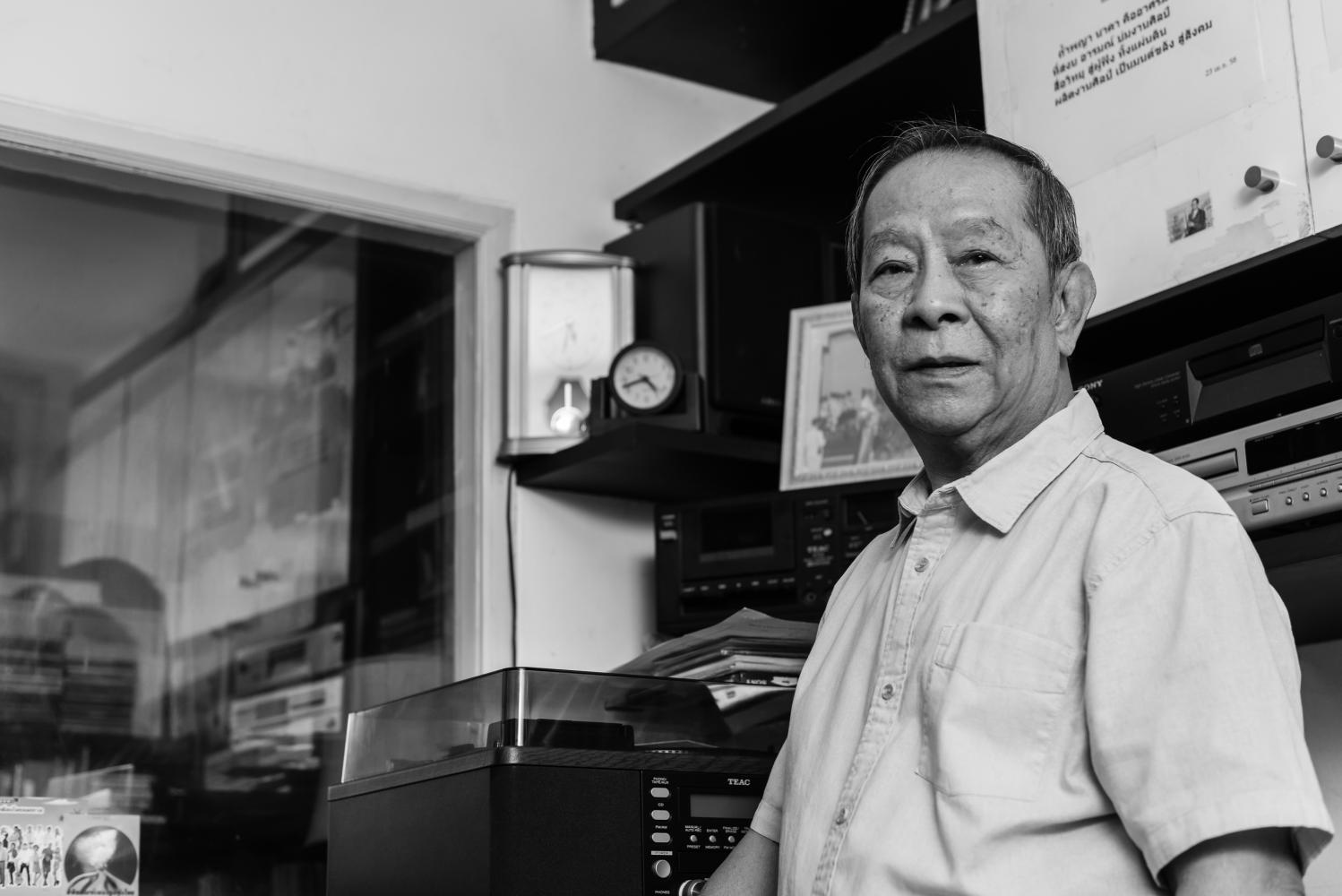
In July 1973, songwriter and DJ Surin Paksiri organised a pleng luk thung concert at the Ratchadamnoen Boxing Stadium in Bangkok. He wanted to hold the event in a park or at a big cinema, but both of those options were too expensive. He settled on the boxing stadium, and he called the concert "Luk Thung Isan vs. Luk Thung Pak Klang" (Isan Country Music vs. Central Country Music).
The concert would be a watershed moment in the history of luk thung music as it would mark the rise of Isan-style luk thung that dominates the business to this day. And it was just one of the many influential moves to promote Isan culture and music made by Surin, who sadly died last week at the age of 79.
Around the same time as the concert, Surin had begun to record this new style and he promoted the records on his own Bangkok radio show, which he presented in Isan Lao, the dialect of the region. His breakout song, a 7-inch single, was Isan Lam Ploen, performed by the then-upcoming molam singer Angkanang Kunchai. The song was a huge hit, although it was not the first (it was the star of the 1972 movie Bua Lamphu though). Thepphorn Petchubon and Saksiam Petchchomphu had got there first. Saksiam, a former drummer, became an overnight star with Tam Nong Klab Sarakham, and by the time of the concert he was one of the first nationally recognised Isan stars. His popularity matched that of central Thai luk thung superstar Sayan Sanya, and it was a head-to-head stage battle between these two representatives of the different styles of luk thung that spurred Surin to set up the concert.
Surin had already organised several face-off gigs between luk thung pak klang and luk thung Isan singers before the boxing stadium show. He needed a name for the Isan style, so he invented the term luk thung Isan in 1973. The teams that faced off were led by Suphan Buri native Sayan Sanya, supported by Chai Muangsingh, Chaichana Boonachote, Waipot Petsupan and Kwanjit Sriprachan, while the Isan team was led by Saksiam and supported by Thepphorn Petchubon, Roi-et Phetsayam, Banyen Rakkaen and Chaweewan Damnoen.
The concert heralded a changing of the guard from central-style luk thung to the Isan style. Since the mid-1980s, the central style has declined in popularity, but the Isan style remains ever popular and is the music most Isan folk like to listen to (think of the biggest luk thung stars today from Tai Oratai to Mike Piromporn to Lamyai Haitongkham and note that most of them are Isan natives).
Perhaps more than any other single individual, Surin influenced the development of luk thung Isan and luk thung molam on multiple fronts. As a master songwriter (and a former student of the legendary songwriter Pran Boon), he created new genres and composed more than 800 songs and many movie soundtracks as a radio DJ called who not only promoted new styles, but actually wrote the songs and produced the records. Thus, he began the process of incorporating western melodies, arrangements and instruments into luk thung music. He once told me there were about 10 different kinds of "international" music that songwriters and composers could use when writing luk thung songs, from cha cha cha to bolero to foxtrot to various other ballroom dance styles.
Working with molam singer Angkanang Kunchai, he further explored development from luk thung Isan style, which while often having a molam intro, did not incorporate any rhythms from molam and was sung in a style similar to central-style luk thung. He was one of the first to use sections in a song directly from traditional molam rhythms, and so in the 1980s, we saw various lam rhythmic styles, called tamnong, incorporated. Hence, toei rhythms were added in the 1980s by rising stars like Pornsak Songsaeng, who recently passed away.
In addition to writing songs and composing music, hosting DJ shows on national radio in Isan Lao, setting up his own band, mentoring musicians and singers, he also found time to create networks to support Isan DJs and songwriters. And during his early years, he did all this while working full time as a corrections officer at a Bangkok penitentiary!
I spent many hours at Acharn Surin's house in Tao Poon. He was always available and always patient in answering my questions. Whether I asked about the origins of ramwong or how he came up with the term luk thung Isan, he would always enthusiastically explain how he went about his business. He won many accolades and awards during his long and distinguished career but somehow he was never made a national artist. One of the nicest and most talented artists in the luk thung world may have departed but his wonderful music will live on.
John Clewley can be contacted at clewley.john@gmail.com.







